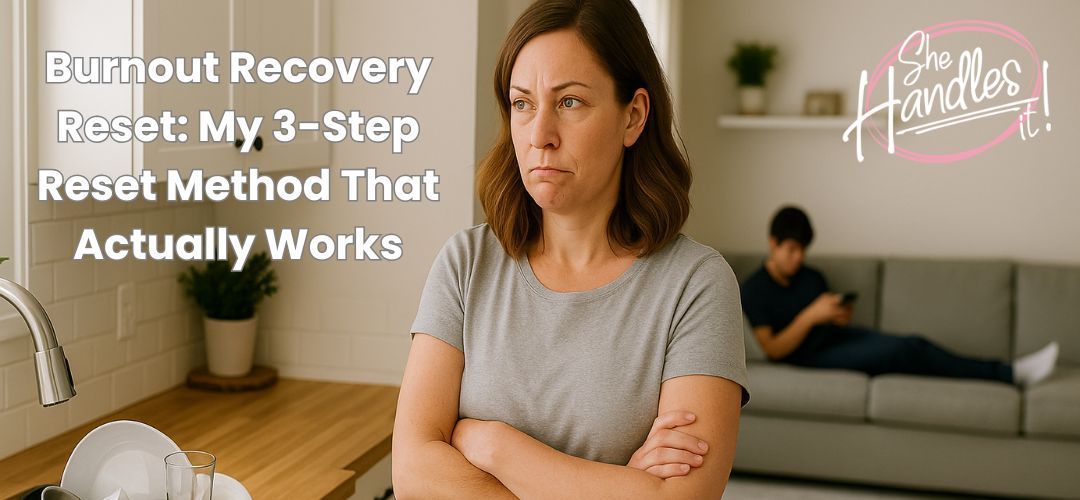
Search She Handles It Blog Posts
Burnout Recovery Reset: My 3-Step Reset Method That Actually Works

Burnout doesn’t usually show up in one dramatic crash. It creeps in slowly, until one day even the simplest tasks feel impossible. For me, it looked like this: standing in my bathroom at the end of a long day, staring at the shower like it was Everest. I was so depleted that the thought of shampooing my hair felt like one too many tasks.
That’s the thing about burnout—it doesn’t just make you tired. It makes life feel heavy, like you’re jogging through mud with bricks in your backpack. Even the things you want to do—like dinner with friends, reading a book, or enjoying your kid’s soccer game—feel like obligations on a never-ending to-do list.
If you’re there right now, let me say this: you’re not broken. You’re burned out. And the good news is, burnout isn’t a permanent state—it’s a signal that something needs to change.
That’s why I created my Burnout Recovery Reset Method. It’s the exact process I used to move from running on empty to actually feeling like myself again. It’s simple, practical, backed by science, and—most importantly—it actually works.
Here’s how it goes:
Step 1: Audit the Load
The first step in recovering from burnout is brutally simple: take stock of everything you’re doing. Not just the big, obvious responsibilities, but also the invisible mental load you carry.
Write it down. Every task. Every obligation. Every role. The endless “I’ll just handle it” items. Because here’s the truth—your brain is carrying way more than you give it credit for. And when you keep juggling it all, you start to lose track of what’s actually important.
Science backs this up. Chronic stress floods your body with cortisol, the stress hormone. When cortisol is constantly elevated, your prefrontal cortex (the part of your brain responsible for decision-making and focus) starts to sputter. That’s why you find yourself re-reading the same email three times or forgetting why you walked into the kitchen. It’s not that you’re lazy or disorganized—you’re fried.
If you’re the only person in your house who knows how the dishwasher works, congrats—you’ve successfully trained your family to do absolutely nothing.
As you audit, ask yourself two questions for each item:
- Does this energize me or deplete me?
- Is this a true responsibility, or just an assumed obligation?
Spoiler: volunteering for every bake sale because “no one else will” is not a sacred responsibility. It’s an obligation you can let go of.
Step 2: Release & Reassign
Once you see the full picture of your load, the next step is to lighten it—intentionally. This means two things: delegating and deleting.
Delegate: Hand off tasks that don’t require your unique skill set. And no, this isn’t dumping. It’s giving someone else the chance to step up and grow.
- Example: Let your colleague build the PowerPoint presentation. Not only does it free you up, but it also sharpens their skills and gives them ownership.
- Example: Assign dish duty to your teenager. You’re not just reclaiming 20 minutes of your life—you’re preparing them for adulthood. (Because trust me, their future roommate will thank you.)
Delete: Some things just don’t belong on your plate anymore. Maybe they never did. That weekly committee you hate? The group chat you dread? Permission granted: let it go.
Here’s why this works: studies show that when we share responsibility, stress levels decrease and engagement increases. Delegating isn’t a weakness—it’s leadership. And deleting the unnecessary? That’s self-preservation.
Remember: releasing and reassigning isn’t just about making your life easier. It’s about redistributing responsibilities so everyone benefits. When you hold everything, you rob others of the chance to rise.
Step 3: Make One Bold Move
Now comes the fun part: rebuilding your confidence. This is where you take one bold, intentional step to reshape your life in a way that actually fits.
Here’s the key: a bold move doesn’t have to be dramatic. You don’t have to quit your job and move to Bali tomorrow (tempting, but let’s keep it practical). A bold move can be small but powerful—something that declares, “I’m no longer carrying all of this on my own.”
Examples:
- At home: Ask your spouse to cook dinner two nights a week. Tell your teenager you’ll no longer remind them about homework—it’s theirs to manage.
- At work: Set a boundary that you leave at 4 p.m. twice a week to make soccer practice. Tell your team you won’t answer emails after 7 p.m. Volunteer for the project that excites you—and say no to the one that doesn’t.
Why does this work? Behavioral psychology shows that taking small, consistent actions rewires your brain and builds confidence. Each bold move proves to yourself that you can set boundaries, reclaim energy, and live in alignment with what actually matters.
Think of it like training a muscle. One rep at a time, you get stronger.
The Bottom Line
Burnout isn’t solved with bubble baths or a two-week vacation. (Though, let’s be honest, both can help.) Burnout is solved by resetting your life with clarity, boundaries, and courage.
That’s exactly what the Burnout Recovery Reset Method does:
- Audit the Load – See what you’re carrying.
- Release & Reassign – Lighten your load strategically.
- Make One Bold Move – Rebuild your confidence, one step at a time.
If you’re sitting in the mud right now, wondering how you’re supposed to dig yourself out—I want you to know it’s possible. You don’t have to do it alone. Sometimes, the quickest way to make change stick is having an accountability partner who can help you stay consistent and keep you honest.
That’s where I come in. If you’re ready to reset, reclaim your energy, and finally build a life that feels good, I’d love to talk. Set up a free Discovery Call here.
Because here’s the truth: just because you can, doesn’t mean you have to.










